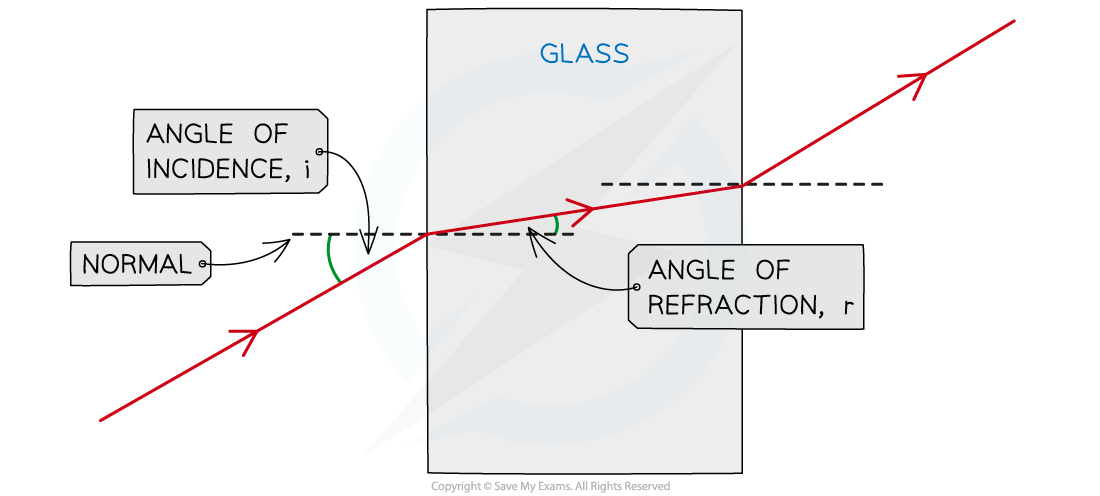Refraction Ray Diagrams (AQA GCSE Physics): Revision Note
Exam code: 8463
Did this video help you?
Refraction Ray Diagrams
Refraction occurs when light passes a boundary between two different transparent media
At the boundary, the rays of light undergo a change in direction
The direction is taken as the angle from a hypothetical line called the normal
This line is perpendicular to the surface of the boundaries and is usually represented by a straight dashed or dotted line
The change in direction depends on which media the light rays pass between:
From less dense to more dense (e.g air to glass), light bends towards the normal
From more dense to less dense (e.g. glass to air), light bends away from the normal
When passing along the normal (perpendicular) the light does not bend at all

How to construct a ray diagram showing the refraction of light as it passes through a rectangular block
The change in direction occurs due to the change in speed when travelling in different substances
When light passes into a denser substance the rays will slow down, hence they bend towards the normal
The only properties that change during refraction are speed and wavelength – the frequency of waves does not change
Different frequencies account for different colours of light (red has a low frequency, whilst blue has a high frequency)
When light refracts, it does not change colour (think of a pencil in a glass of water), therefore, the frequency does not change
Worked Example
The diagram below shows two parallel rays of light entering and passing through prism A and prism C.

Draw a third parallel ray entering and passing through prism B.
Answer:
Step 1: Draw a parallel ray on the left

Step 2: Draw the refracted ray at the first surface

As the ray enters the block it bends towards the normal since it is going into a denser material
In this case, the angle of refraction is smaller than the angle of incidence
Step 3: Draw the refracted ray at the second surface

As the ray leaves the block it bends away from the normal
In this case, the angle of refraction is larger than the angle of incidence
Examiner Tips and Tricks
Practice drawing refraction diagrams as much as you can! It's very important to remember which way the light bends when it crosses a boundary:
As the light enters the block it bends towards the normal line
Remember: Enters Towards
When it leaves the block it bends away from the normal line
Remember: Leaves Away

Unlock more, it's free!
Did this page help you?